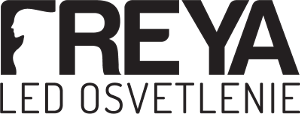For many years LED lighting has been used for many applications, such as monitors or TV, and becoming a main light source during the next decades is inevitable. No doubts, LED Lighting is an effective, saving and ecological option, which requires significantly less energy than conventional lighting systems. From the long-term aspect, LED Lights become a very profitable investment, which can help you not only to save but also to the environment.
At the moment of buying the LED Lights, you can face a lot of special terminology and shortcuts you should pay attention to. We provide a short explanation in following article in order to help you to understand some key words.

Basic terms
LED – Light-Emmiting Diode is a semiconducting compound, a part which emits the light, when electric current passes through. It works as a light source and is much more effective than classic bulb light source - it produces much light per Watt, has a longer operation time and significantly lower operation costs.
Watt (W) is a unit of power and when stated with lights, express the energy required. Classic bulbs 60 W deffinitelly require more energy than LED bulbs of 8 W input. Be careful - the consumption data do not say how much light is emitted, to get to know it, check the data on lumen amount.
Lumen (lm) is a light flux unit. A light flux represents the light energy emitted by a light source in 1 second time period. Therefore, a number of lumens shows how much light is emitted by the light source into any direction - higher the number of lumens, higher the light flux. We have to be aware that conventional light sources, such as bulbs, flourescent lamps or gas-discharge lamps, emit the light to every direction, 360°, what many cases is not really necessary. On the other side, LEDs usualy emit the light only in 120° angle what means significant cost reduction if the more effective light source is employed.
Lux (lx) is unit of illuminance and luminous emittance, caused by a light flux of 1 lm striking upon the area of 1 m2. The lux value is detremining criteria for industrial lighing applications. Illuminance limits for the exact application are also determinated by the lux value.
Kelvin (K) is a light sources colour temperature unit. This value determines whether the light colour is red (warm) or blue (cool) - higher the Kelvin number, cooler (more intense blue colour) the light.
CRI (color rendering index) or Ra is a colour reprodction index, a measure of the ability of a light source to reproduce the colors of various objects faithfully. Values vary between 0 and 100. Lower the Ra value, lower the colour perception ability. Therefore, if Ra equals 100, the light emitted allows the human eye real colour perception, whereas if Ra value equals 0, a human eye is not able to perceive the colours.
IP value expresses a light enclosure protection level against the water and solid particles. These levels are expressed by two numerals. Higher the IP number, better the light body protection. First numeral shows the solid particles protection, second one shows the protection against the humidity or water. For example, bathroom or exterior lights must be protected more than common lights, therefore both their IP values need to be higher.

Light Colour
A LED technology is favourable not only for the environment, but also for a human eye - LED lights do not emit UV nor IR. When choosing the LED light, you should definitely consider the space where the light would be installed and the desired effect. Regarding these facts, you can choose one of three LED Lights colours.
Day White (Cool White) is typical by cool white light with blue hue and can cause an unnatural colour perception. On the other hand, its luminous intensity is the highest, therefore Cool White colour is the best for the storage rooms, halls and exterior lighting systems. This light colour is emitted by the light sources with colour temperature values between 5 500 and 8 000 K. The typical Day White colour has colour temperature value 6 500 K. Values between 5 000 and 6 000 K are the best for the common industrial applications.
Neutral White represents the common office lighting. Objects get a medium or medium-cool colour hue. This light colour is suitable for offices or reading lamps. The colour temperature values vary between 4 000 and 4 500 K.
Warm White is the hottest and the most pleasant light colour and resembles the common bulb light the most. A warm yellow hue makes the human skin looks natural, colours seem soft and places are more pleasant. Therefore, this light colour suits the housing premises, interiors, coffeehouses etc. The colour temperature values vary between 2 700 and 3 300 K.

We believe this article helps you to understand the LED terminology better. In the future, we will keep on trying to make you more familiar with the topic and will tell you more about LED types and numbers in LED Lights.
Check out our Products and do not hesitate to contact us.
